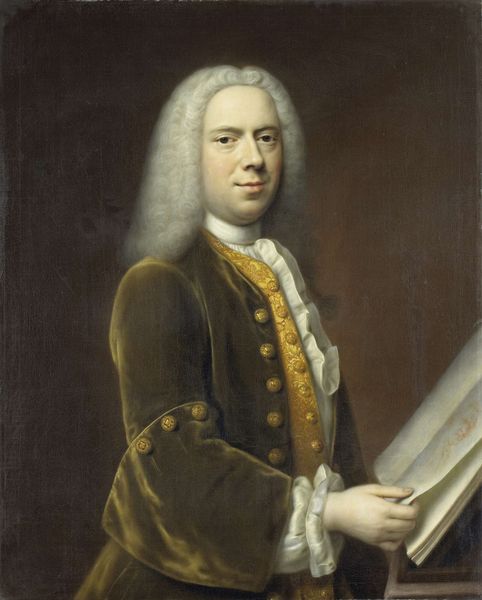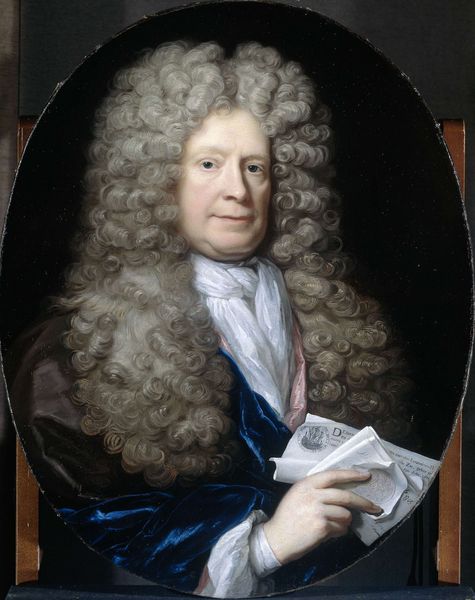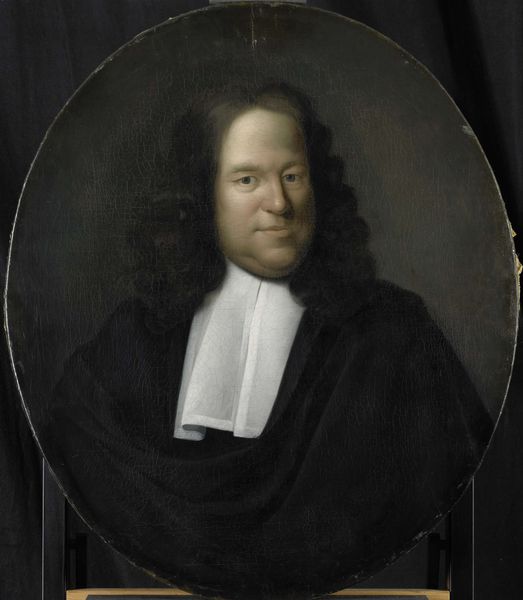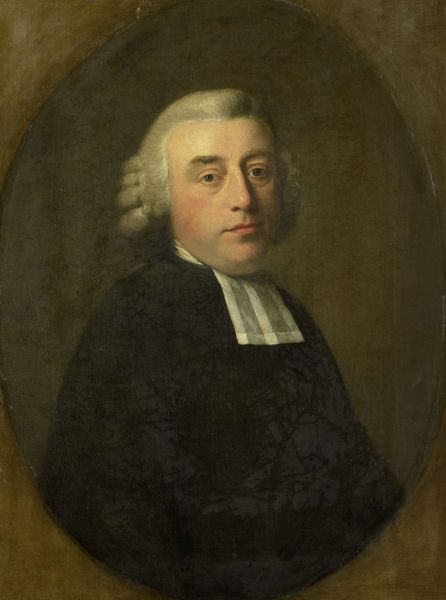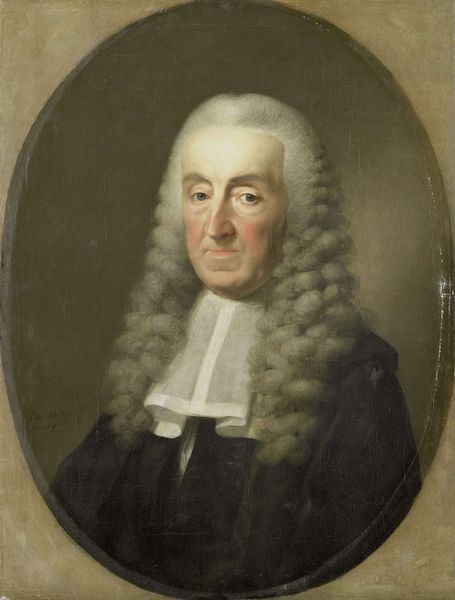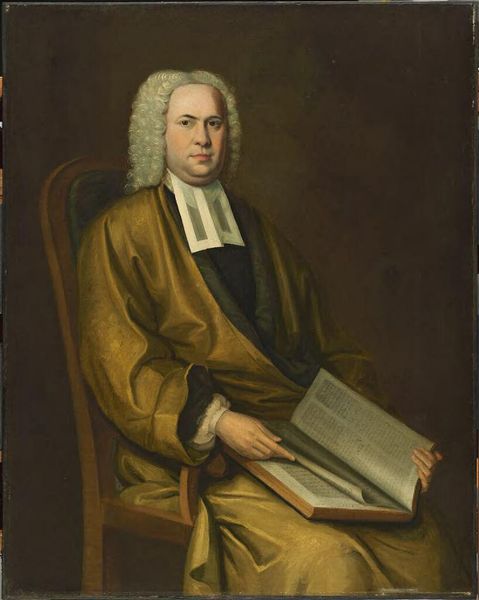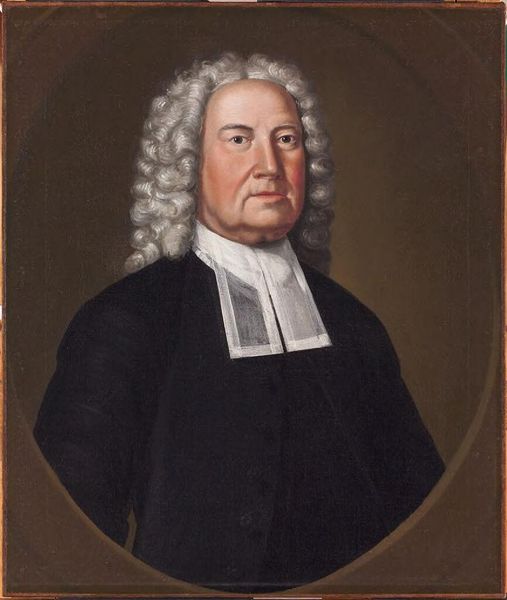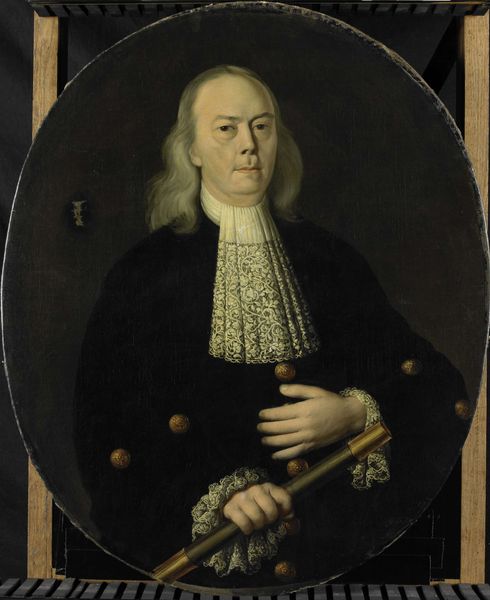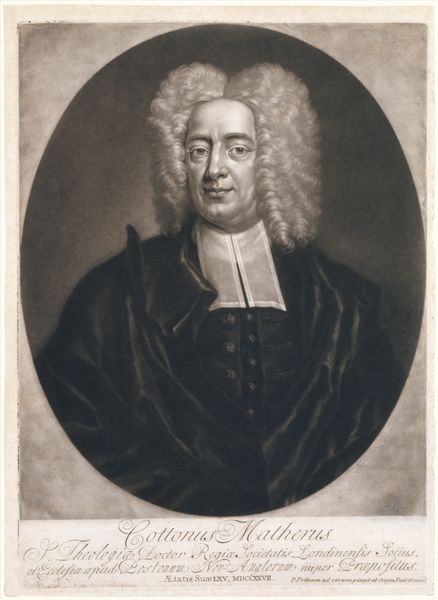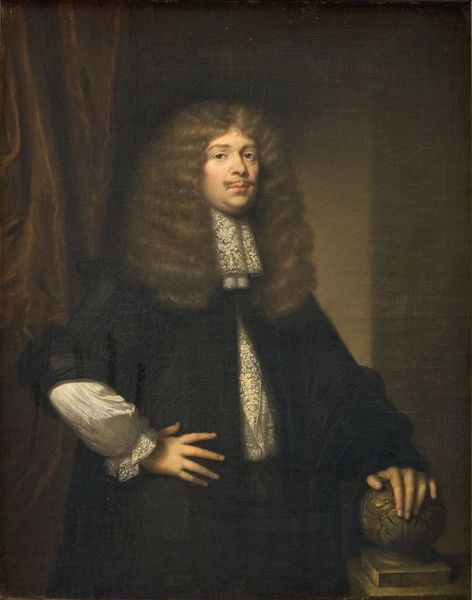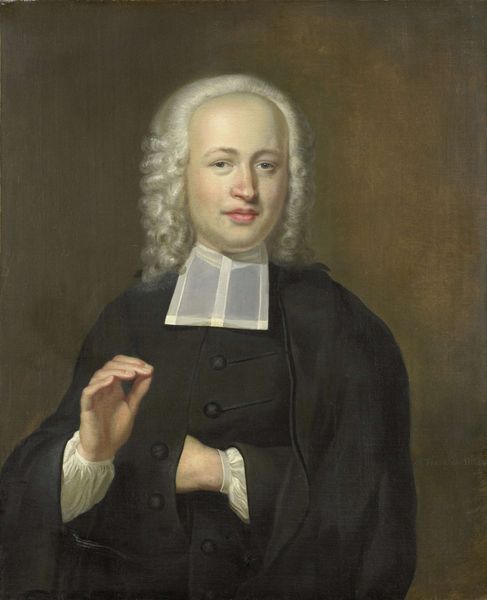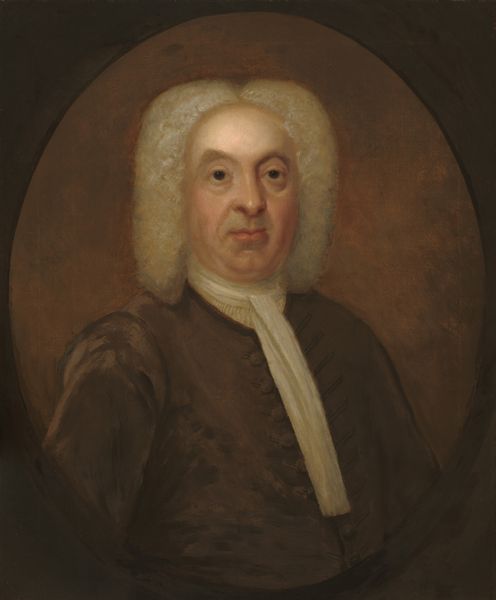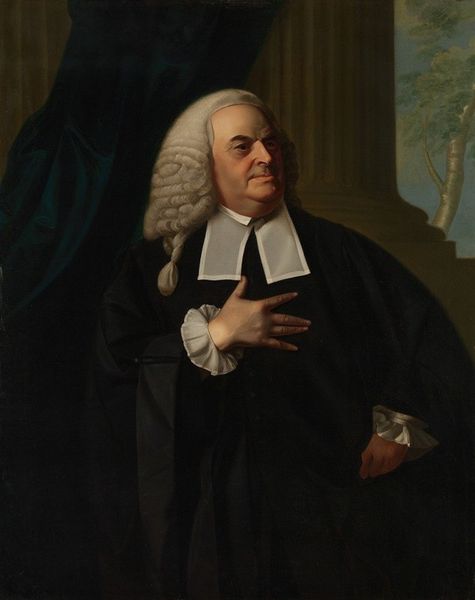
painting
#
portrait
#
baroque
#
portrait
#
painting
#
academic-art
Dimensions: height 83.5 cm, width 68 cm
Copyright: Rijks Museum: Open Domain
Curator: Here at the Rijksmuseum, we have a rather intriguing portrait of Willem Sautijn, an Alderman of Amsterdam. It was painted in 1734. What strikes you about it? Editor: Immediately? The almost unsettling stillness. It feels like I've stumbled into a silent, slightly awkward conversation that was interrupted. He looks as if he is in a waiting room with great patience! Curator: That's a very evocative take! Considering the period, Baroque painting often depicted grandeur and dynamism, this has some of that, yet it is certainly restrained. He was an alderman after all; it emphasizes decorum. Let's delve into this a bit more—his gaze is direct, a slight smirk playing on his lips. It conveys a sense of self-assurance, power, typical to leaders and administrators. Editor: His powdered wig is remarkable, isn’t it? Almost ridiculously fluffy! I'm fixated by it. How long did he spend on that hairpiece every day? And the black jacket makes him look oddly timeless. But, you are right, his eyes have the true, self satisfied glint of a confident authority. Curator: It also embodies the social stratification of the era, a world steeped in hierarchy, class distinctions and the emerging merchantile elite. And think of the contrast with, say, depictions of working-class people. This painting is a window into 18th-century Amsterdam’s social fabric. The portrait's setting offers sparse context: a deep shadowy space and minimal details so as not to distract from the subject and, naturally, the expression on his face. Editor: True, the letter held casually with the red ribbon... it all feels very posed and deliberate. Almost too polite. Although... it kind of reflects a reality even now. Do leaders not work very hard to project very specific image to people? A specific mood for specific goals? It's oddly pertinent still. Curator: It is very true! In Sautijn’s carefully controlled image, there’s so much that we are able to interpret. Thank you for pointing this out; even if this initial intent of the art had less complexity to what you pointed out, it doesn’t invalidate our perception of his legacy.
Comments
No comments
Be the first to comment and join the conversation on the ultimate creative platform.
